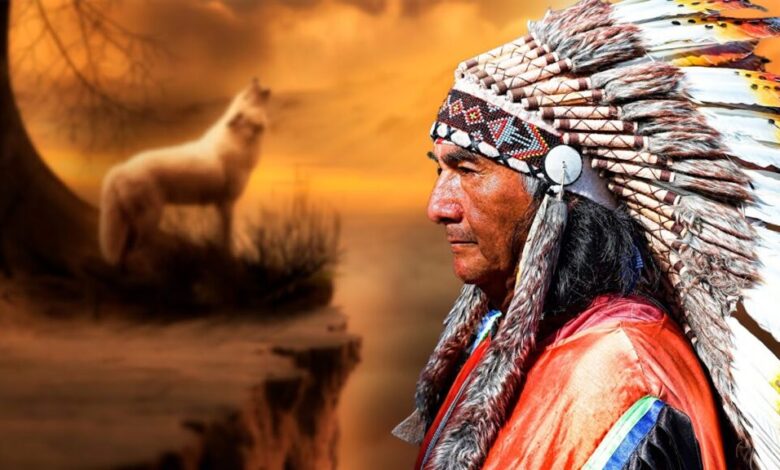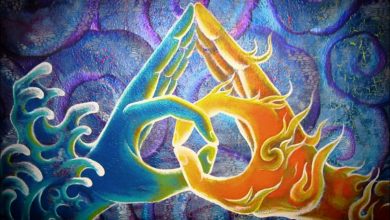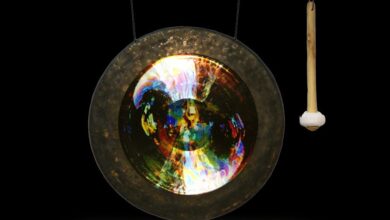
Traditional indigenous healing programs originated among Native peoples in response to the loss of their culture, land and lives to colonial settlements. Although the practices differ across the various tribes, they all involve rituals and a wealth of healing knowledge. Most Native people thought of health as an expression of spirit and a constant process of staying healthy. Being in harmony with others kept illness at bay and remained strong. While this may be true of the modern medical model, Native communities believed that a healthy person should be in harmony with other people; the environment; the natural world and that actions and attitudes could bring health or illness.
Traditional Native American healing arts and practices are earth-based, honouring and respectful of the Father Sky, Mother Earth, Grandfather Sun, and Grandmother Moon. Many healing practices and spiritual ceremonies often included the use of sacred tools and symbols. Medicine bundles were made from cloth or hide and used for special purposes. They were revered and held sacred, those medicine bundles belonging to a particular tribe were referred to as “grandmothers.” Sacred hoops or medicine wheel ceremonies are also common.
Communal Ceremonies
Communal ceremonies for traditional Native American health are held to promote wellness. The ceremonies are a reflection of Native conceptions of spirit and Creator. In addition to prayer, drumming, and songs, they are often held at sacred locations, such as a Medicine Lodge. Native healers conduct these ceremonies, with non-Natives participating only on invitation. They may also be used as a means to contact the spirits.
During the ceremony, a spiritual leader lit a ritual pipe and offered a traditional Ojibwe prayer. Then, he blessed participants with smouldering sage. This ceremony was the start of a new endeavour to make traditional Native American health a mandatory part of the curriculum in medical schools. The results of this work are being studied. And it may inspire the next generation of healthcare professionals.
Native American Tools and Traditions:
- Animal Spirits or Totems – Animal Totems: The appearance of birds and animals, either in reality or Dreamtime, are considered to be totem messengers offering spiritual guidance.
- Sweat Lodges – The Native American sweat lodge or purification ritual cleans and heals the body, mind, and spirit. My first sweat lodge experience was Gaia themed, honouring the earth mother, and participants’ mothers and grandmothers.
- Dreamcatchers – The earliest dreamcatchers (sacred hoops) were crafted for children as healing amulets to protect them from nightmares.
- Fetishes – Sacred objects such as feathers, bones, seashells, animal skins, etc. are used as tools to facilitate an awakening into your whole self, used in prayer, or utilized for protection and healing. See Feather Fetishes
- Prayer Flags – Prayer ties or prayer flags made from fabric and tobacco are offered to The Great Spirit in exchange for blessings.
- Smudging – Using a smoking smudge wand for purification is part of many Native American traditions. Common herbs used for smudging include sage, sweetgrass, yerba santa leaves and lavender.
- Ceremonial Peace Pipes – The Native American pipe is smoked in a ceremonial or ritual to call upon the four elements and give an offering to the Great Spirit.
- Curanderismo – Blending and evolution of Native and Hispanic healing techniques involving herbs, sweats, diet, and magick.
- Sacred Hoop / Medicine Wheel – Each direction of the medicine wheel offers its lessons, colour association, and animal spirit guide.
- Talking Stick – Passing the talking sticks from speaker to speaker is a respectful way to communicate and share opinions. This tradition is especially helpful in keeping disagreements from getting out of hand.
- Healing Amulets – Amulets or talismans associated with Native American practices include shells, crystals and gemstones, rattles, feathers, animal skin and bones, and Zuni fetishes.
Efficacy
The indigenous population strives to restore excellent health and practices prescribed by the tribes. These ways vary, but each one is consistent with the concept of balance and well-being. Because health and disease are associated with an imbalance, it is important to recognize that the treatment process begins with the restoration of health. A state of balance implies harmony, synchronicity, and wholeness in life energy. Similarly, illness requires the correction of an imbalance, and the use of traditional medicine can help to achieve this.
Whether traditional Native American healing practices are effective may depend on several factors. The success of a treatment may depend on the patient’s response to the treatment, whether the patient experiences less pain or a sense of happiness. The effectiveness of a treatment may also be determined by the community’s perception of its benefits. While traditional methods are not scientifically proven, they are a vital part of Native American health care.
Conclusion
If you’re considering going to a native American healer for treatment, you’ve probably heard of their philosophies and practices. But how do you know if they’re right for you? Native American healers have always believed that illnesses are caused by trauma – such as a physical or emotional accident – and that the soul or spiritual power is lost as a result. To reverse these effects, healers must perform rituals and other remedies to return the soul to its proper place. Other types of illness are brought about by people breaking the “rules of living” and disrespecting others.




